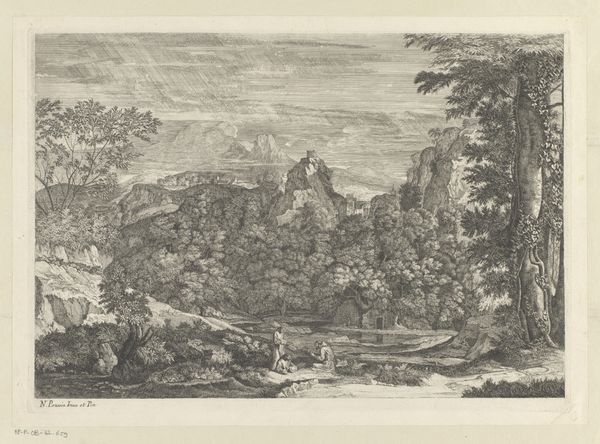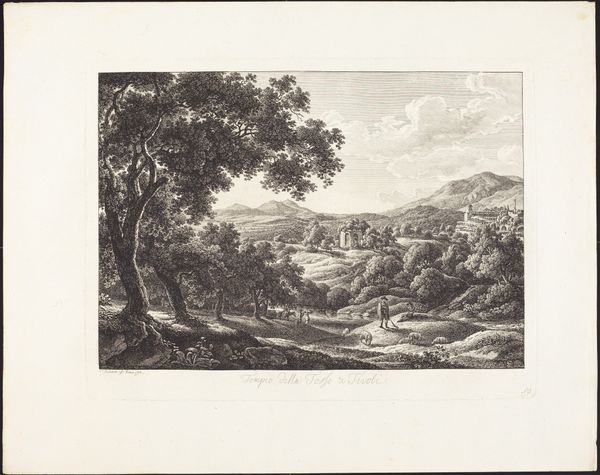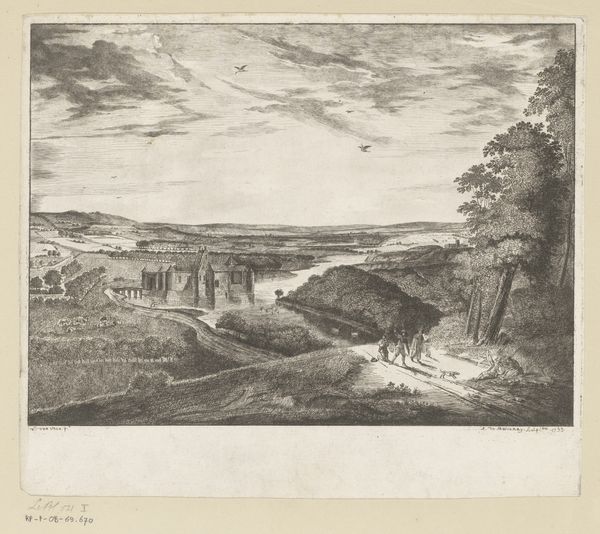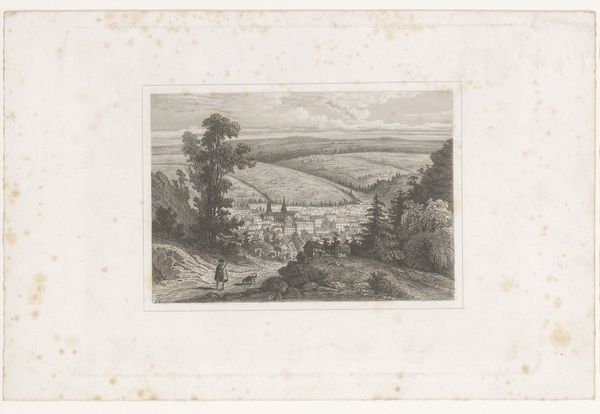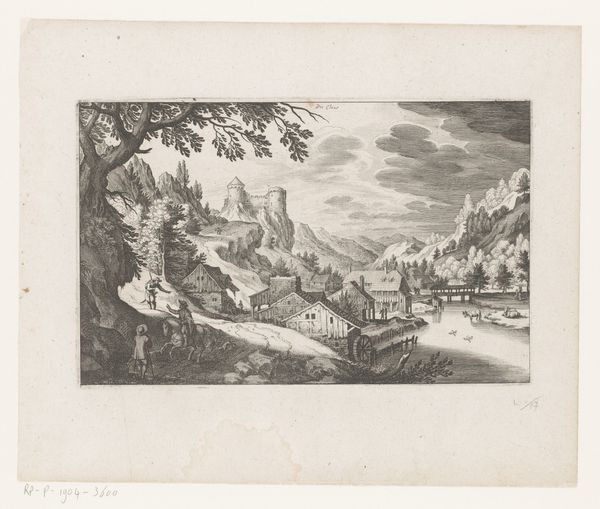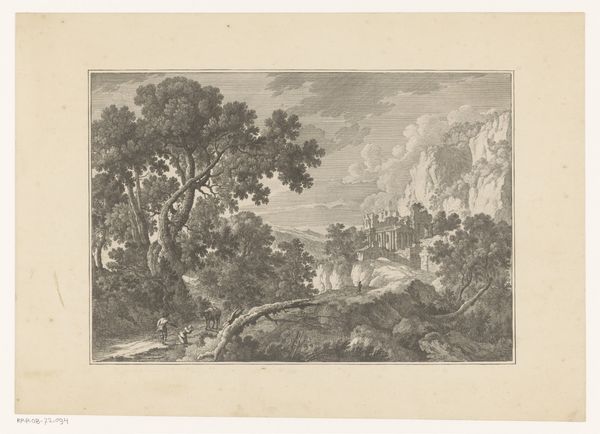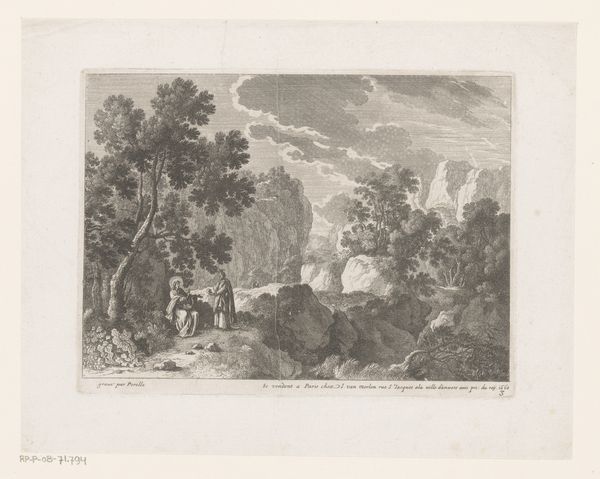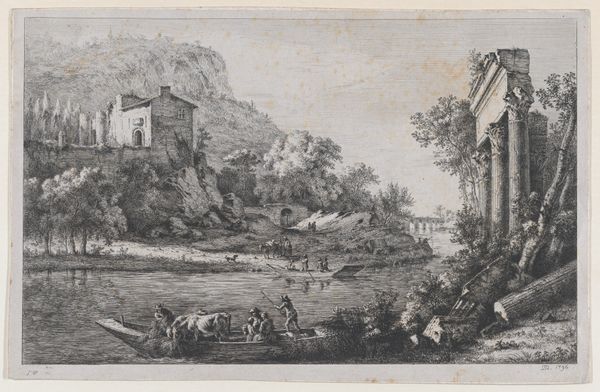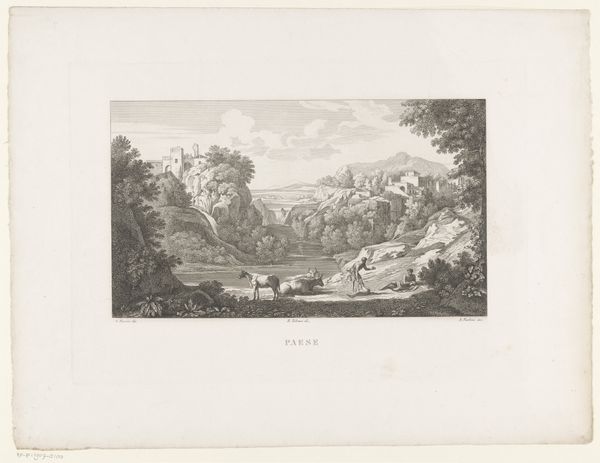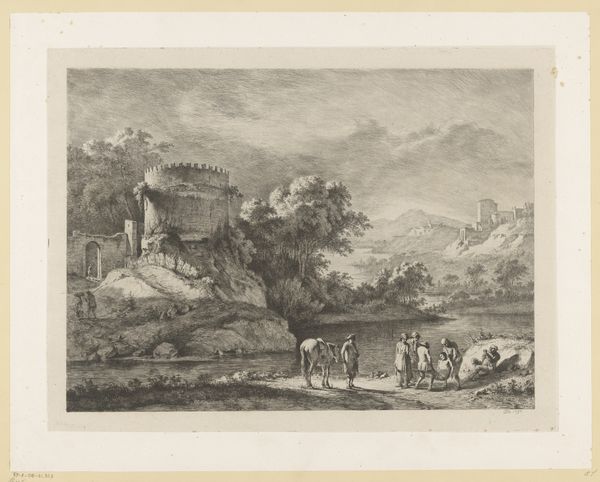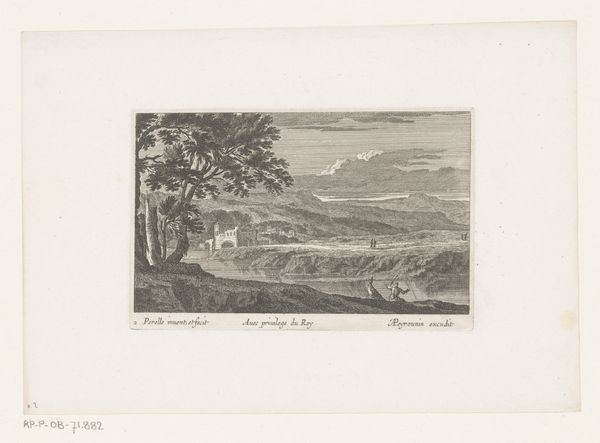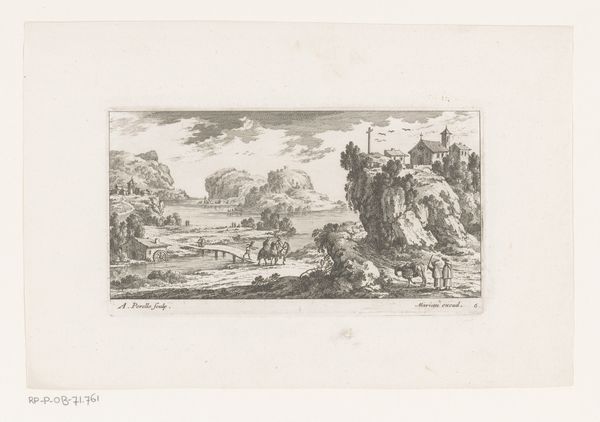
drawing, engraving
#
drawing
#
old engraving style
#
landscape
#
romanticism
#
engraving
Dimensions: height 221 mm, width 345 mm
Copyright: Rijks Museum: Open Domain
Curator: Before us, we have a scene rendered with meticulous detail in an engraving by Jean Jacques de Boissieu, created in 1799. The work is entitled "Rivierlandschap met een dam te Saint-Fortunat bij Saint-Didier", or, "Riverscape with a dam at Saint-Fortunat near Saint-Didier." Editor: It feels fragile. The textures suggest a handmade quality that contrasts with the potentially mass-producible nature of engraving. The linear marks seem intentionally labored, like drawing but using the precision of the printing press. Curator: Indeed. There’s a delicate balance here. On one level, the landscape itself evokes a feeling of Arcadian harmony, an almost nostalgic reflection of a pre-industrial age. Ruined buildings on a distant hill call forth thoughts of the transience of human creation contrasted with nature's enduring power. Editor: Transience resonates, particularly through those deliberate, crafted lines. The materiality emphasizes the slowness, the deliberate consumption of time and labor. It invites considering the hands that carved the plates and pulled the prints. How many impressions could be reasonably created from a single plate and at what price for this skill and raw material? Curator: The composition, from the subtle suggestion of the current to the dramatic rocks and the high vantage point, is classic Romanticism. There is a desire to portray the sublimity of nature, with the distant human presence almost dwarfed by the environment. Even the crumbling ruins contribute to a sense of time's passage and human limitation. What meanings might an audience have constructed as a print available for consumption in contrast to viewing landscape as unique painting? Editor: That’s an intriguing contrast. Perhaps access changed its semiotic function. By bringing the "experience" into the private sphere, as opposed to going to nature. These prints provided repeatable symbolic imagery. If widely circulated, these "riverscapes" arguably become material vehicles for shared aspirations tied to class and perhaps regional identity? Curator: An interesting point. To summarize, both nature and craft intertwine in this work to evoke reflection. Editor: Yes, and reminds us to consider who made it and to whom, given what labor and matter meant during this pre-industrial era of revolution.
Comments
No comments
Be the first to comment and join the conversation on the ultimate creative platform.
